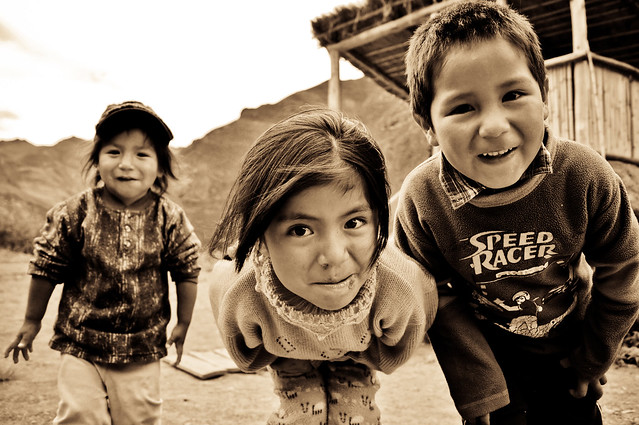How to Fight Child Stunting - One Language at a Time
/On the day you were born, you were forced out of a beautiful warm bath into the cold, harsh world. Your lungs burned from the air you now had to learn to breathe. This was unpleasant, and you most likely yelled long and loud to let everyone know exactly how you felt about the situation.
Soon, though, you were tightly bundled up and given a tasty new kind of food. You began to pack on the pounds. Over time, more delicious foods were added to your diet. You didn’t have to think about this—food just appeared and you ate it, focusing instead on exploring this fascinating new world. Your mind grew as the world expanded. Everything was amazing and you, too, were amazing.
But what if it wasn’t this way?
What if your parents or caretakers lived in a community where food was harder to come by, and where they had perhaps never been made fully aware of the importance of regular, balanced nutrition to your early physical and mental development?
The latest UNICEF data shows that over twenty percent of children worldwide suffer from malnutrition. For children who survive this deprivation, stunting often occurs, with serious consequences. From the WHO website:
““Some of those consequences include poor cognition and educational performance, low adult wages, lost productivity and, when accompanied by excessive weight gain later in childhood, an increased risk of nutrition-related chronic diseases in adult life.””
World Bank President Jim Yong Kim has said that “Children who are stunted have up to 40 percent less brain volume by the time they get past their first 1,000 days.”
How well do you think you would have done with forty percent less brain volume?
Again, malnutrition affects over twenty percent of children in the world today. That’s roughly the equivalent of the entire population of the United States—a huge problem.
One of the barriers to addressing this problem is language, as a high percentage of the children affected by malnutrition live in indigenous communities where the primary language is different than the that of the culture at large. How do you educate parents about the vital importance of early nutrition in their children’s development if they’re not proficient in the language in which that sort of information is available?
Problems this big can seem insurmountable. But there is hope.
The country of Peru has led the way—in less than a decade, it has more than halved its high rates of stunting among children under the age of five.
The Ethnologue reports that Peru has ninety-three living languages, and many of these are spoken by minority communities in rural areas. In Peru, as with many other countries, the problem of stunting is much more prevalent in indigenous communities, so Peru needed a tailored approach that focused on communicating the information to people in a language they could understand.
A recent World Bank Report on Peru’s progress says that “Speaking Quechua, Aymara, Awajun or Ashaninka during birth registering campaigns, or during early affiliation drives and using indigenous languages in educational or promotional radio spots and in soap operas has become part of the way regional health networks, Juntos, SIS officials, and civil-registry officials work.”
Over a decade ago, the World Bank helped by making an educational video called “My Future in My First Centimeters” that played regularly on television and as an audio broadcast over the radio. Recorded in Quechua (a minority language in the country of Peru), the video helped spark a national debate and conversation. Peruvians have risen to the challenge, maintaining a sustained political will to address the problem. They have continued to seek ways to expand the message to the roughly 400,000 people living in indigenous Amazonian communities.
Stunting is not yet a thing of the past in Peru (or in any country), but because of the work Peruvians have done so far, hundreds of thousands of boys and girls have been given a basic level of opportunity that most of us grow up taking for granted.
Parents everywhere want to do well by their children. Peru has shown us that presenting parents with good information in the language they best understand has an enormous impact on the health and vitality of their children, communities, and country.
SIL LEAD is proud to be a part of this ongoing work around the world.



